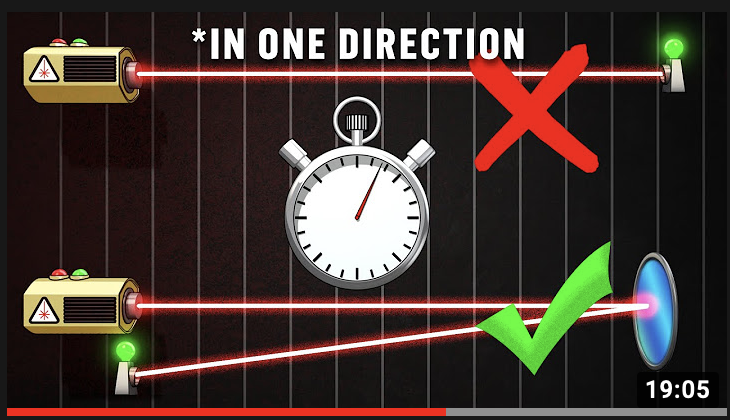A little while ago, I consulted on a video by @veritasium (& @SciencePetr) in the fact that you cannot measure the one-way speed of light.
So many people said “obviously the speed of light is the same in all direction….
So many people said “obviously the speed of light is the same in all direction….
… all you need to do is look at the distant stars. If the speed of light were different looking this way as opposed to that way, the sky would look different in different directions.”
I said no!, and decided to write a paper with @lukebarnesastro about this.
I said no!, and decided to write a paper with @lukebarnesastro about this.
The one-way speed of light is usually considered in the realm of the special theory of relativity. As noted in the video, you can cast special relativity with differing speeds of light. Here’s a usual space-time diagram (left) and anisotropic speed of light space-time diagram.
The problem with talking about the universe, is that it is governed by the general theory of relativity, and space-time diagrams become more complex and it is not easy to map the anisotropic speed of light onto them.
There is, however, a special case, known as the Milne Universe. This is a universe is a solution to the cosmological equations, but has no mass or energy in it. This universe can be directly mapped onto special relativity.
The important things are lines of simultaneity, in cosmology, we mean where things have experienced the same amount of time since the Big Bang. That the red dashed line in the figure in the previous tweet. The blue lines are light rays traveling to the observer, seeing things ..
.. on opposite sides of the sky at the same age. But once we introduce anisotropic light speed, then time dilation etc gets messed up. So too do lines of simultaneity. Here’s the killer plot.
The two black dots are sources. They sit on a line of simultaneity and so are the same age. For the one on the left, its light travels instantaneously to the observer, whereas the one on the right travels at c/2. The observer, however, sees the same on either side of sky.
So, an anisotropic speed of light does not make your view of the distant sky different. It just appears the same. And it all comes down to simultaneity. Here’s lines of simultaneity for isotropic to most anisotropic. The view is always the same.
Of course, this is for one special universe - the Milne universe. Working on the general case, but this is cool and I enjoyed writing the paper a lot.
Should be on arxiv tomorrow
[Fin]
Should be on arxiv tomorrow
[Fin]

 Read on Twitter
Read on Twitter








